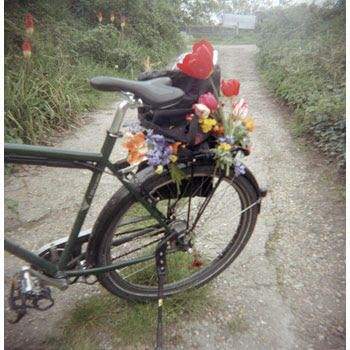
A couple of months ago I listened to a radio documentary about three Somali-Canadians who had left comfortable homes and jobs in Canada to go back to Somalia and start a radio station in Mogadishu.
They had fled Somalia during the violence of the 1980's and built new lives in Canada. But now all three saw their homeland continuing to disintegrate into violence and chaos. And most of all they saw ordinary people as having no voice. There was no forum to begin building democracy (or even for a mother with a sick child to ask where she could get help). So, committed to civil society and the freedom of speech, they returned to Somalia and established HornAfrik radio (now TV as well).
It was essentially talk-radio for the people - news, music and interviews. The warring clans and warlords had their own radio stations - built on the model of those that incited genocide in Rwanda - which were essentially propaganda stations. But HornAfrik was different.
It allowed ordinary people to express their views. It gave air-time time to women's groups, to street children, to doctors and health programmes and eventually even to warlords.
The warlords found their propaganda stations were losing listeners in a dramatic fashion and so eventually they were forced to accept the invitations to appear on HornAfrik themselves - but they had to relinquish control and allow themselves to be questioned on-air.
Such is the power and the threat of free-speech. And sadly, if inevitably, that threat became too great.

(Canadian Ali Sharmarke (left) and Ahmed Abdisalam Adan, co-founders with Mohamed Elmi of HornAfrik, an independent news broadcaster in their native Somalia. Sharmarke was killed by a car bomb Aug. 11.)
From a documentary on CBC:
Reporter Mohamed Hassan is one of the few people to ever ask the women what's happening. "She said that we are in fear. Sometimes they come here to rape, sometimes they loot our properties. We are in fear. There is nobody who's going to protect us," Hassan says of his assignment to interview the women.
Horn Afrik is very ambitious. In a country without any government, its owners feel they have to do more than just cover the stories. They bring in community activists to help determine what collectively they could do to fix the problems exposed in the news.
Ali Sharmarke is another founding owner. He had a good job in the federal Finance Department in Ottawa before he felt compelled to return here. "We see the media as a means to do a social change, and probably I can say now Horn Afrik is one of the best instruments for social change in Somalia," Sharmarke says....
In another room, Farah Usef is working the phones for his As It Happens-style program called Today's Events. He's trying to interview warlords to ask them why they are stalling the Somali peace talks.
"The call is getting through, but mostly they don't answer. Even if they answer, mostly they speak in a very rude language," Usef says.
Usef has all their numbers as he works through his warlord directory. He has only a few hours to put together the show all by himself. So far, no interviews. Aden is more surprised that many warlords do talk to Horn Afrik and some have actually come into the studio. It makes him optimistic
"I can see people's attitudes changing from things that they never thought of yesterday that is possible today, and to me, the most powerful change comes from the mind," Aden says....
On August 11th - Mahad Ahmed Elmi one of HornAfrik's journalist/hosts was shot in the head and killed in Mogadishu. Later that day the car of Ali Sharmarke - one of the original Canadian founders - was blown up as he returned from Elmi's funeral.

This morning I listened to an interview with Ahmed Abdisalam Adan one of of the other co-founders of the station. He was in Canada visiting his family when the killings occurred. He is now planning to return to Somalia to continue the work of HornAfrik.
Simply put, the work of these people needs to be recognised.





 And the two (of many) I lust over most...?:
And the two (of many) I lust over most...?:














































